How to plant yucca, as well as rules for dividing and replanting an adult plant
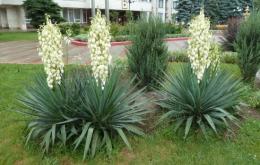
Yucca has been decorating gardens for over a hundred years. A tree-like plant with its appearance will turn any garden into a fairy-tale forest. The miracle flower belongs to the agave family. He came to our country from America and took root here perfectly.
Content:
- Description
- Features of care
- Preparing the soil and using fertilizers
- How to plant yucca correctly
- How to plant yucca growing outdoors
- Features of transplanting Yucca filamentosa
Description
There are more than 20 species of this plant. Another name for it is false palm. It was nicknamed that way because of its appearance; indeed, the resemblance to a palm tree is very strong.
And the Indians called it the “Tree of Life.”
This tree-like perennial plant can winter well in the open air of the Caucasus, Crimea, Ukraine and all southern regions. In the northern regions - grown as indoor potted plant.
Garden yucca has taken root well in gardens in the southern regions of the country. She feels comfortable in gardens and parks. It grows slowly. It begins to bloom at the age of three years.
An evergreen perennial, it can be a tree or shrub, depending on the species. The trunk is of various sizes, can be several centimeters high, or can grow several meters.
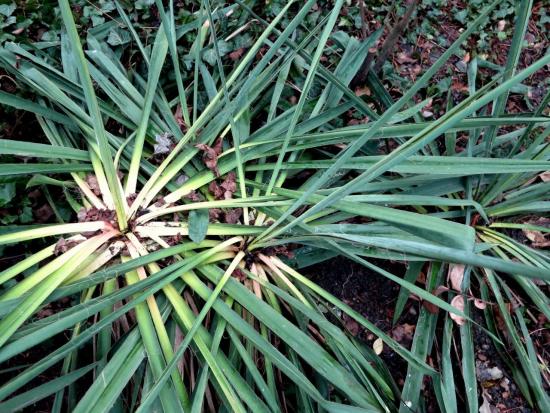
The tree trunk grows straight or has several branches, the maximum height is up to 12 m. The leaves are arranged in a rosette pattern; they are elongated along their entire length and often have thorns.The leaves are dense, hard, located on a shortened stem.
The color of the leaves is dark green with a bluish tint.
Blooms in the summer, it is an unusually beautiful sight. Flowering lasts for 3 weeks. During flowering, the false palm tree transforms and becomes even more attractive and exotic.
The flower is a huge candle, assembled from many flowers that look like bell. It has a pleasant aroma, similar to the smell of expensive soap.
The flowers themselves are edible and have a pleasant taste, similar to green beans or artichokes. They are often added to salads or omelettes.
There are derived frost-resistant varieties of false palm. Frost-resistant yucca is a perennial plant that can winter outdoors for several years in cold climates. But, unfortunately, after several years of growing it in a garden or park, the trunk begins to become overgrown with bark, which is vulnerable to cold weather factors.
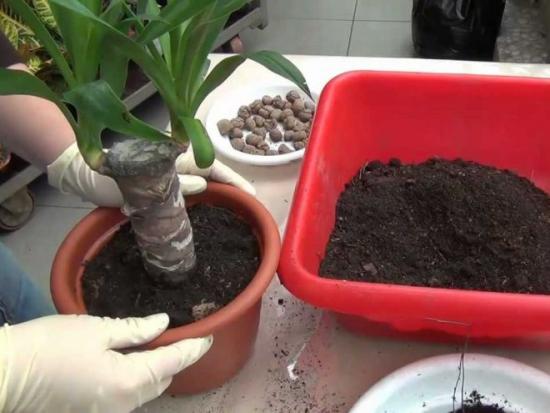
Frost-resistant species include: false palm gray and filamentous. These species can feel great in frosts down to -18-20 degrees below zero.
Features of care
Caring for an exotic plant is not difficult. Basically, all care consists of watering, loosening, fertilizing, protecting from frost and disease.
The false palm tree should be watered as the top layer of soil dries. Moreover, yucca leaves should be sprayed daily in the early morning and late evening, in the absence of sunlight.
The plant is not capricious at all. Yucca You need to water, feed and protect from frost on time. If all three conditions are met, she will delight you with her attractive appearance.
False palm is relatively resistant to diseases.But prevention should be carried out. The leaves should be wiped from time to time with a cotton pad soaked in vodka. This event will prevent the occurrence of certain diseases.
The main thing in care is not to overdo it. wateringIf you water too often and abundantly, rotting of the root system may occur. If it is too rare, the leaves of the false palm will begin to curl. Therefore, it is necessary to find a middle ground.
Adult yucca needs to be pruned. Thus, the plant can be rejuvenated and several more seedlings can be obtained from it for planting; pruning should be done immediately after being released from winter insulation.
After trimmings The stem will begin to open new buds, which will become rosettes of leaves. Thanks to this procedure, the plant becomes even more exotic.
Proper pruning of yucca should be done as follows:
- Two days before pruning, the false palm tree should be watered generously.
- Circumcision is performed with a clean, sharpened blade or knife. Approximately 7-9 cm from the level of the rosette of leaves.
- After trimming, wait 10-15 minutes for the trunk to dry. After that, treat the cut with fungicide and crushed charcoal.
- Cover the top with garden varnish.
After two weeks, new shoots will appear. A healthy plant has about 5-6 of them.
Preparing soil and fertilizers
Yucca is unpretentious, but it will look much more attractive if planted in loose soil that does not retain water. It is advisable when landing in priming add coarse sand. The soil must be well drained.
Before planting yucca, it is advisable to dig up the soil in advance and clear it of various weeds. Dig deeply, while simultaneously introducing mineral fertilizers to deeply nourish the soil.It’s a good idea to add black soil or calcareous soil to the soil before planting.
Feeding produced during the period of active growth, namely: spring and early summer. At this time, liquid humus, compost and mineral fertilizers will be required.
In the first years of life in the garden, yucca needs to apply mineral fertilizers. They do this for two years. Upon reaching the age of 3 years, they begin to fertilize with organic fertilizers. It is not recommended to feed a bush with them under the age of 3 years; at this time it root system not yet strong enough.
Yucca, which is already more than 3 years old, is fed with liquid organic fertilizer in early April.
To develop the vegetative system, in early June, it is necessary to sprinkle a handful of superphosphate on the top layer of soil around the plant. The fertilizer will penetrate the soil when watering or with rain and reach the roots.
How to plant yucca correctly
Experienced gardeners recommend planting a false palm tree after gradually hardening it off.
To do this, the newly acquired seedling needs to be exposed to the sun gradually. In the first 3-4 days, she should be in the fresh air for about 1-2 hours. In the next 3-4 days, it can be left outside for 3-4 hours. Then for another 5-6 days you can leave it for up to 6 hours.
After such hardening, we can plant our palm tree in the prepared soil.
Planted in spring or summer, depending on climatic conditions. During planting, the daytime temperature should be at least 20-22 degrees Celsius.
Only under such planting conditions will the root system prepare for the winter period.
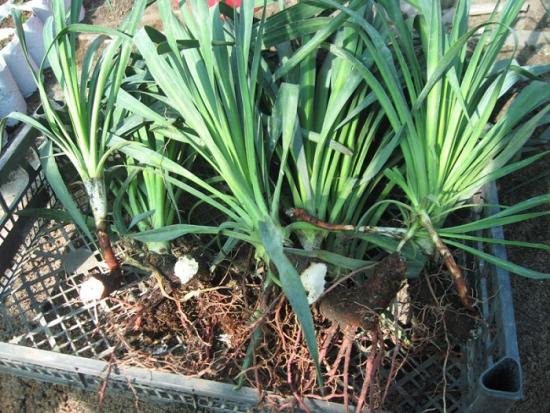
The soil must be well drained. The soil acidity level is approximately pH 7.5.
Choose an open, well-lit area for planting.Yucca is a southern plant, but the abundance of sunlight does not have a favorable effect on the color of the foliage, so the area should be sunny, but during the daytime sun it is desirable to have partial shade.
To plant a false palm tree, you should prepare the soil in advance. The area for planting it abundantly mulchUse sawdust or hay to prevent moisture from evaporating from this area for as long as possible.
To plant, you need to dig a deep hole. The size of the hole must exceed the size of the root system.
Some plants that cannot tolerate cold are moved indoors for the winter. It is for such plants that you should dig a larger hole and plant the yucca along with the pot.
In this way, it grows outside in the summer, like a garden tree, and in the winter, the pot along with the plant is simply dug up. This is very convenient; there is no need to disturb the roots again.
How to plant yucca growing outside
Decorative yucca grows and blooms for up to 20 years. But to ensure her a comfortable existence, periodic transplants will be required. It is usually transplanted in cases where it has grown greatly and it has become crowded with the shoots.
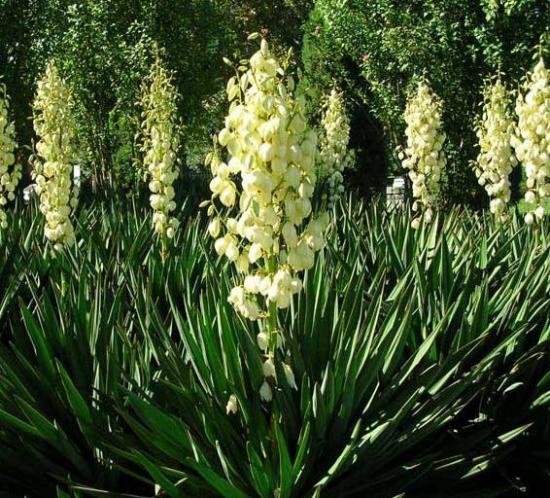
Replanting is required in cases where:
- Numerous shoots and she herself has grown greatly. It is necessary to disconnect its shoots and plant them along it. The yucca itself also requires replanting.
- When replanting a false palm tree, you need to dig out the root system carefully. Its roots go deep into the soil, so you should dig deeper so as not to damage the roots.
- They are usually replanted in spring or late summer.
- After transplanting to another area, flowering can only be expected after a year.
Fertilizing is carried out after 14 days.
Features of transplanting Yucca filamentosa
Evergreen perennial shrub yucca filamentous has very interesting leaves. Nice threads hang down along the edges of the blue-green leaves; the leaves themselves grow from a rosette. The leaves grow up to 90 centimeters in length and up to 4 centimeters in width.
It practically does not have a trunk as such. Outwardly, it looks as if the leaves are growing straight from the ground.
The false filamentous palm tree feels great in the middle zone. It is often found in parks in the Moscow region.
Transplanting an adult Yucca filamentous plant is not much different from replanting representatives of another species. The filamentous false palm should be moved to places that are not very dark, open with good lighting.
It is important that there is no high groundwater in the new area where it will be transplanted. They are capable of washing away the roots, which can result in the death of the plant.
You cannot transplant an adult filamentous yucca to places where it will be shaded by large trees. In this case, its leaves will reach towards the sun, this will negatively affect its appearance. The leaves will fade and become emaciated, and the overall appearance of the rosette will be untidy.
For an adult flower, the planting hole is made large. It should be 1 meter deep and 70 centimeters in diameter. The bottom of the planting hole must be covered with drainage. Namely, gravel or large crushed stone.
The next layer in the planting pit should be a mixture consisting of soil, black soil, ash and rocky debris. At the end of planting, abundant watering should be provided.
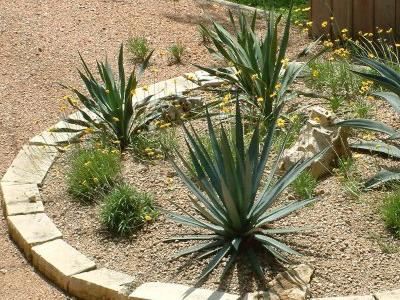
An adult large false palm tree in a new area can take quite a long time to take root, so it needs high-quality care. Transplantation is carried out only if there is no threat of frost and only in warm weather.If there may still be frosts, it is better not to risk it and postpone the transplant to a later time.
The southern regions of the country are undoubtedly lucky to have such beautiful exotic the plant chose their climatic conditions.
Growing exotic plants is fun, and the results are worth it.
About growing a flower and care features - in the video:

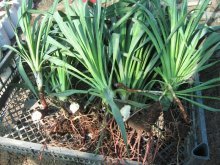
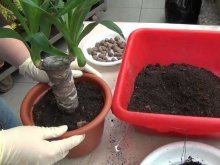
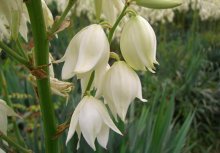
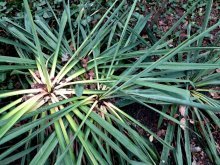
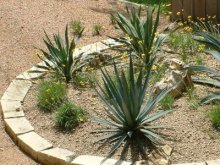
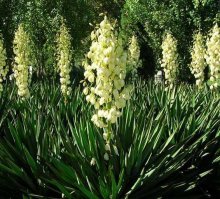
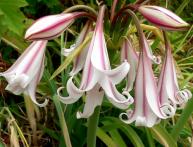



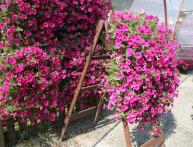

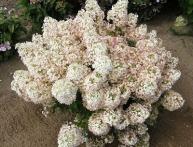
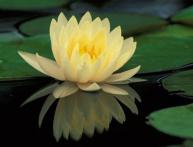
Comments
Yucca is a very beautiful plant, but in our region in winter frosts can reach -20 degrees. Therefore, it is better to wrap the false palm tree in rags or cardboard in the fall. To prevent yucca from growing, you need to place plastic or galvanized metal in the soil.
We have domestic yucca, but we haven’t tried planting it in the garden. We bought a big one at home second hand. By the way, it is completely unpretentious in care; it is important to water it correctly, not to freeze, and to feed it.